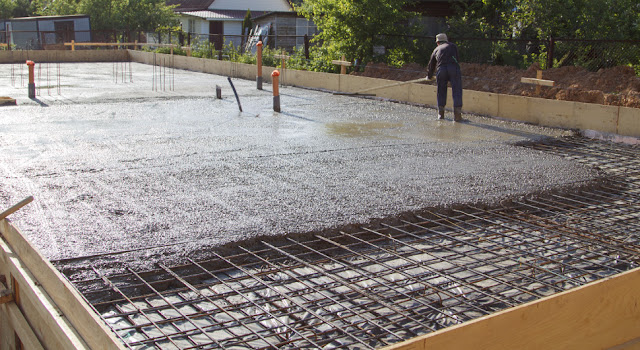All about Wire Mesh Sieves
Have you ever pondered upon the methods scientists and engineers employ to measure the size and shape of minuscule particles found in materials like powders and grains? The answer lies in wire mesh sieves. Although these devices may appear simple, they play a crucial role in particle analysis, enabling researchers to accurately gauge particle size and distribution. This article delves into the captivating realm of particle analysis, shedding light on the technology behind wire mesh sieves. By exploring sieve mesh size intricacies and the proper interpretation of particle data, we invite you on an extraordinary journey into the scientific aspects of wire mesh sieves and particle analysis. Whether you are an experienced scientist or simply curious about the science behind the materials we encounter in our daily lives, join us as we unravel the science behind wire mesh sieves and particle analysis!
History and Development of Wire Mesh Sieves:
YKM Wire mesh sieves have a rich history spanning over a century, with the first patent for a wire mesh sieve filed in 1887 by William G. Tyler. Initially, these sieves were constructed using silk, but as technology progressed, more durable materials like stainless steel and brass came into use. Today, wire mesh sieves find application in diverse fields, ranging from pharmaceuticals and food production to mining and construction.Over time, wire mesh sieves have undergone numerous advancements to enhance their accuracy and durability. Manufacturing technologies have evolved, enabling the production of sieves with tighter tolerances and more consistent openings through precise wire mesh weaving. Moreover, the introduction of electroformed sieves has further improved accuracy and durability. These sieves are made from a single piece of metal, devoid of seams or joints, thereby offering exceptional reliability and precision.
The Working Principle of Wire Mesh Sieves:
Wire mesh sieves operate based on the principle of particle separation according to size. A sieve consists of a frame with a mesh screen stretched across it. The mesh screen comprises interwoven wires, forming a grid of holes. The size of these holes determines the passage of particles through the sieve.To utilize a wire mesh sieve, the material to be analyzed is placed on top of the sieve, and then it is shaken or vibrated. As the material passes through the mesh screen, particles larger than the hole size are retained on the top surface, while particles small enough to pass through the holes fall through to the bottom.
Once the material has passed through the sieve, the retained particles are weighed, and this weight is used to calculate the particle size distribution. This information assists in evaluating the quality and consistency of the analyzed material, enabling adjustments to be made in the production process to improve overall product quality.
Understanding Particle Size Distribution:
Particle size distribution refers to the range of particle sizes present in a sample of material. This information holds great significance in various industries since particle size can profoundly influence material properties and performance.Typically represented through histograms, particle size distribution is portrayed with the x-axis denoting particle size and the y-axis indicating the percentage of particles within each size range. The shape of the histogram offers essential insights into the material under analysis. For instance, a narrow distribution curve signifies uniform particle sizes, while a broader curve suggests the presence of particles with varying sizes.
The accuracy of particle size distribution measurements hinges on multiple factors, including the quality of the sieve used, the size range of the particles analyzed, and the consistency of the sample being examined.
The Significance of Accurate Particle Analysis:
Accurate particle analysis plays a pivotal role in a wide array of applications, ranging from optimizing production processes to ensuring consistent product quality. In industries such as pharmaceuticals and food production, even slight variations in particle size can have a substantial impact on product performance and safety.
Apart from maintaining product quality, precise particle analysis helps identify potential issues or areas for improvement in the production process. For instance, if the particle size distribution of a material exhibits excessive breadth, adjustments can be made to enhance consistency and reduce wastage.
Types of Wire Mesh Sieves:
Two main types of wire mesh sieves exist: woven wire mesh sieves and electroformed sieves.Woven wire mesh sieves are produced by interweaving wires to form a grid of holes. The size of these holes depends on the wire diameter and spacing. Woven wire mesh sieves are available in diverse sizes and mesh counts, making them suitable for various applications.
On the other hand, electroformed sieves are crafted by depositing metal onto a mold, resulting in a single piece of metal with no seams or joints. This manufacturing technique enables superior accuracy and durability, as there are no weak points in the sieve where particles could become trapped. Electroformed sieves are commonly employed in applications demanding high precision, such as the pharmaceutical and semiconductor industries.
Factors Influencing Wire Mesh Sieve Performance:
Several factors can impact the accuracy and performance of wire mesh sieves, including the size and shape of the particles being analyzed, the sieve quality, and the consistency of the material under scrutiny.Blinding, a common issue with wire mesh sieves, occurs when particles become trapped in the sieve's holes, obstructing the passage of subsequent particles. Blinding can be caused by electrostatic forces, surface tension, or particle shape. To mitigate this problem, sieves may be pre-treated with a surfactant or anti-static agent, or the material being analyzed may be treated to reduce surface tension.
Another factor influencing wire mesh sieve performance is the amount of material being analyzed. Overloading the sieve can yield inaccurate particle size distribution measurements, as particles may accumulate on the sieve's upper surface instead of passing through to the bottom. To ensure accurate measurements, it is crucial to utilize the appropriate amount of material relative to the sieve size.
Choosing the Suitable Wire Mesh Sieve for Your Application:
Selecting the appropriate wire mesh sieve for a given application depends on multiple factors, such as the particle size range, required accuracy, and material consistency.
For applications demanding high precision, like those in the pharmaceutical and semiconductor industries, stainless steel wire mesh sieves are often favored. These sieves offer enhanced accuracy and durability compared to woven wire mesh sieves, albeit at a higher cost.
Conversely, woven wire mesh sieves serve as a more economical option for applications where cost is a concern. They are available in various sizes and mesh counts, rendering them suitable for a broad range of applications.
Common Mistakes in Wire Mesh Sieve Analysis:
Numerous mistakes can occur during particle analysis using wire mesh sieves. Overloading the sieve represents a common error that can lead to inaccurate particle size distribution measurements. Furthermore, failing to clean and maintain the sieve properly can result in blinding and subsequent inaccurate measurements.To ensure precise measurements, it is essential to use the correct amount of material relative to the sieve size and to clean and maintain the sieve adequately after each use.
The Future of Wire Mesh Sieves and Particle Analysis:
As technology advances, we can anticipate further improvements in the accuracy and durability of wire mesh sieves. Additionally, progress in data analysis and machine learning is likely to introduce more sophisticated particle analysis techniques, providing even deeper insights into material properties and performance.Conclusion:
Wire mesh sieves serve as a crucial component of particle analysis, facilitating the accurate measurement of particle size and distribution. Through an exploration of sieve mesh size intricacies and the proper interpretation of particle data, we have embarked on a captivating journey into the scientific aspects of wire mesh sieves and particle analysis. Whether you are an experienced scientist or simply intrigued by the science underlying the materials we encounter daily, we hope this exploration has unveiled the fascinating world of particle analysis.<br /><br />
Learn more about what are the benefits of using SS sieve screens.




Comments
Post a Comment